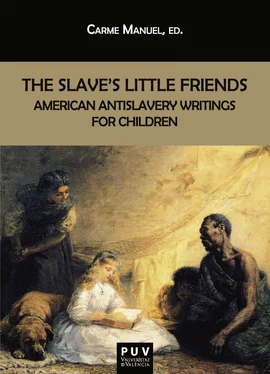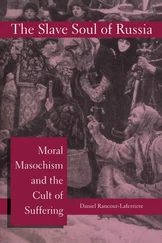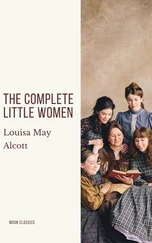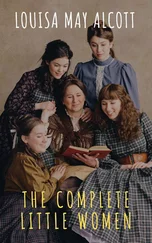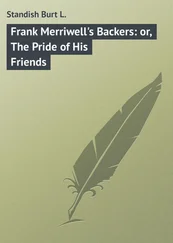1 ...6 7 8 10 11 12 ...29 Both “Old Betty” and “The Negro Nurse” focus on the religious conversion of two African women who are redeemed out of their spiritual darkness by little girls, and show the way for children to contribute to the antislavery cause as domestic missionaries and Gospel crusaders.
In 1829, Abigail Field Mott published THE LIFE AND ADVENTURES OF OLAUDAH EQUIANO; OR, GUSTAVUS VASSA, THE AFRICAN. FROM AN ACCOUNT WRITTEN BY HIMSELF. ABRIDGED BY A. MOTT. TO WHICH IS ADDED, SOME REMARKS ON THE SLAVE TRADE, a text reissued in around twelve editions until the end of the nineteenth century. Mott, a prominent New York Quaker abolitionist and one of the trustees of New York’s African Free School, prepared this abridgement of Equiano’s narrative— The Interesting Narrative of the Life of Olaudah Equiano, Or Gustavus Vassa, The African (London 1789)—so that it might be “‘suitable for distribution to children of this school’ as a prize for ‘good behavior’” (Cutter 2017). Mott accompanied her abridgement with a preface she had penned in 1825 and illustrations by Alexander Anderson, a reputed wood engraver. In between this date of composition and the publication of the pamphlet, Mott published Biographical Sketches and Interesting Anecdotes of Persons of Colour. To Which is Added, a Selection of Pieces in Poetry , printed both in United States (in New York by the abolitionist printer Mahlon Day) and in England (in York by the Quaker printer William Alexander).
Mott’s Equiano was printed by Quaker publisher Samuel Wood and included antislavery poems by William Cowper and Thomas Day, as well as the text Remarks on the Slave Trade (London, Philadelphia, 1789) with the famous illustration of the cross-section of a slave ship. Eric D. Lamore explains that this abridged edition helps understand why “this life writer and his autobiography became part of the United States and African American autobiographical traditions” (68). Abigail Mott was related through marriage to Lucrecia Mott, the abolitionist and woman’s rights activist, and this edition is “the end product forged from a chain of textual mutations, one that reveals the unstable nature” of Equiano’s original text (69).
For her part, Martha J. Cutter analyzes how Mott’s text emphasized black children’s potential to claim “power in their own lives and becoming active in abolition debates” (2017: 117). Mott’s rewriting of Equiano’s key passages, for Cutter, tries to contest the visual objectification of the enslaved body in the illustrations, as well as the transatlantic ideas of blacks as subjects subsumed in a perpetual childhood. For her part, Valentina K. Tikoff explains how Mott presents Equiano as “the exemplar of what a young African American reader could and should become: a fervent Christian, an eager student, an industrious worker, a loyal citizen, and an economically responsible free person of color,” qualities that were also part of white children’s social indoctrination into the American ethos of self-creation. For Tikoff, “Mott’s abridgment shows not only how abolitionist principles shaped African American children’s education and reading material but also what the central role of African American children and their education was in defining who could become a full citizen of the young republic” (2017: 94).
Mott’s abridgement, however, stands as one of the first rewritings of an exemplary black individual’s life and accomplishments based on his own documented words. Equiano thus becomes a role model to be compared with the white canonical Franklinian model of the self-made man. As Frederick Douglass said in “Self-Made Men,” his famous lecture first delivered in 1859: “Self-made men […] are the men who owe little or nothing to birth, relationship, friendly surroundings; to wealth inherited or to early approved means of education; who are what they are, without the aid of any of the favoring conditions by which other men usually rise in the world and achieve great results.” Mott provides, thus, a representative portrait of a black person as an instructive model for correct moral behavior that signaled the beginning of a fruitful and necessary tradition in African American children’s literature.
Radical abolitionist writings for children
As the antislavery struggle gained momentum in the 1830s, new and more aggressive messages for children became necessary. Evangelical Protestants constituted the core of the American abolitionist movement, and were adamant in their belief that slavery was a national sin and the moral duty of all their country fellows was to help eliminate it. As the decades passed, abolitionist views branched out in different and sometimes antagonistic factions that disagreed on the methods and strategies to follow in order to eradicate slavery. However, as Paula Connolly writes, radical abolitionist writings for children presented “a nonnegotiable view of slavery as an unquestionably cruel system,” and “placed slavery within a specifically American context to critique the failings of a government whose founding documents theoretically espoused liberty, yet in practice supported slavery.” These authors “argued for racial equality,” “called for the immediate end to slavery,” and “sought to radicalize young readers, encouraging them to actively participate in the abolitionist cause” (15). As mentioned above, these writings were tainted with racial prejudices and rarely questioned the prevalent ideas of white privilege. Yet, as the violence confronted by some of their authors attests, radical abolitionists often suffered personal persecution and social ostracism because their writings “threatened existing political, social, and racial hierarchies” (Connolly 15). Minimizing the political and pedagogical significance of these texts because they do not comply with the notions of twenty-first century racial equality leads readers to misunderstand the powerful work of nineteenth-century sentimental literature for children and the efforts of antislavery advocates to politicize children as members of a future more democratic and egalitarian American republic.
Rebecca de Schweinitz points out how the emergence of abolitionism coincided with the growth of sentimental notions of childhood among the rising northern middle class, as well as with the idea that the appeal to the heart was crucial to bring about political change. But to make children “feel,” abolitionist writers distanced themselves from mainstream notions of children’s innocence and violated the sacred limits of childhood as a haven against the turmoil of the world. Their writings forced the young to confront the many atrocities that lay hidden for many adult Americans. The scenes of cruel punishments, the poignant grief endured by the enslaved with the disruption of their families, the descriptions and justifications of slave mothers’ infanticides, and the loss of sexual innocence were nowhere to be read about but in these politically committed texts, a far cry from the ideals described in mainstream American writings for children. As Benjamin Lamb-Books explains, “[a] common insult in the rhetoric of slavery was to accuse one’s opponents of a lack of feeling,” because, “[a]ccording to the moral grammar of late sentimentalism, insensitivity to pain of other bodies was a troubling sign of one’s own inhumanity” (26).
Lydia Maria Child’s “Jumbo and Zairee” (1831) and “Mary French and Susan Easton” (1836) attested to the abolitionists’ growing concern for the plight of African Americans. Child (1802-1880) ranks among the most influential and prolific reform writers of her time and was hailed by the reputed abolitionist leader William Lloyd Garrison as “the first woman in the republic.” Abolitionist, North American Indians’ and women’s rights advocate, writer, editor, journalist, and speaker, in 1824 she published her first novel, Hobomok, A Tale of Early Times , a story in which she already stepped ahead of her time and portrayed the inter-racial love between an Indian man and a white woman. Unfortunately, as Carolyn L. Karcher explains, her reputation “was erased from history when the backlash against Reconstruction that began even before her death destroyed almost everything she had fought for” (xi).
Читать дальше
